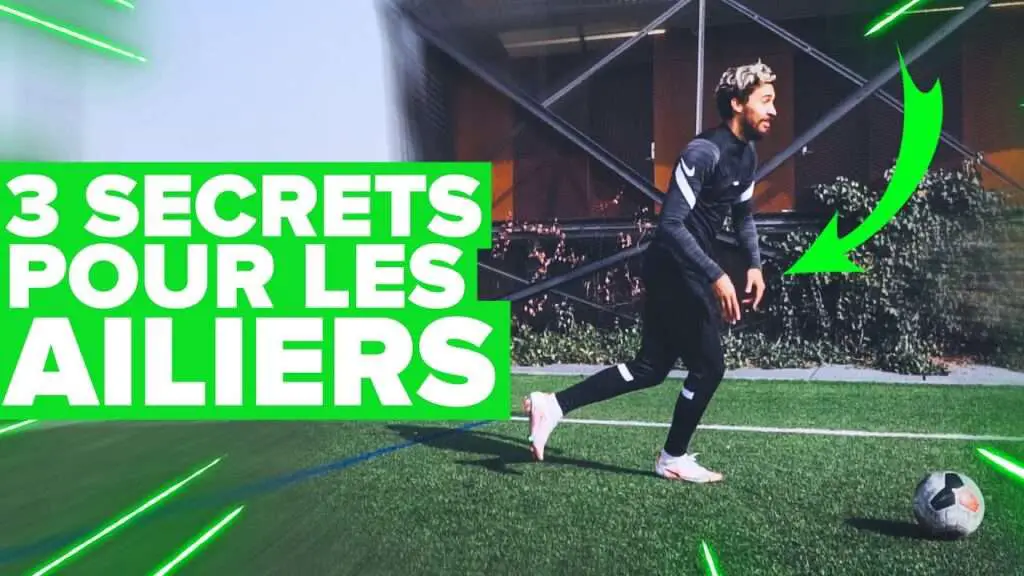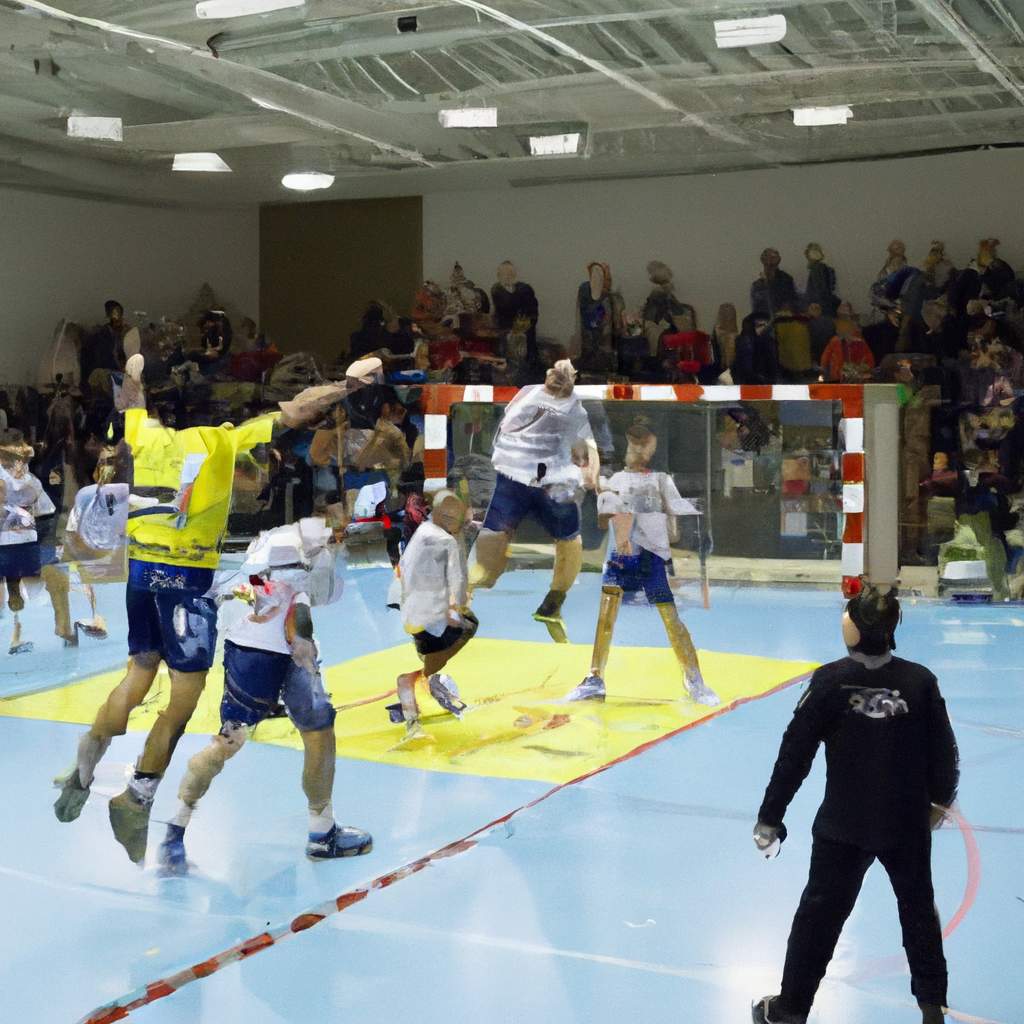Info
Today I’m going to give you some tips specifically designed for new wing players. These tips will help you feel comfortable and confident in this sometimes difficult position. The wing is not only a passer, it is also a key element in the attacking system. Indeed, the wing can initiate an attack and conclude it! It is therefore crucial to develop the skills required to fill this particular position. You can choose from these 8 tips the one or ones that interest you the most or that seem most important to you. The objective of this article is to give you food for thought and basics that your wingmen must know, or even master 😉.
Tip #1: The winger must always be goal-oriented
By playing this way, the player can:
– Have a precise vision of the position of your direct opponent as well as other players.
– Quickly create a dangerous situation for the opposing team.
– Force his opponent to concentrate on him.
It is unfortunately common to observe wingers in matches (or during training) who find themselves with their backs to goal or facing the defense.
Tip #2: Should the winger commit internally or externally?
In the role of finisher of the action:
Outside engagement is a strategy used when a player is between defenders number 2 and number 1. This can occur when the defender is passive, late, or inattentive.
On the other hand, internal engagement is carried out when the external space closes. In this situation, the player has two options:
– Shoot between defenders number 1 and number 2.
– If the space closes completely, he can continue his race with the ball and pass to a teammate located on the other side of the field. The teammates affected could be the centre-half, the opposite full-back, the center or the opposite winger.
– Another option is to make a pass to the back to allow him to shift.
In a role of initiator of action:
If you opt for a specific tactic, you can favor an external or internal approach:
– The external approach consists of eliminating the opposing defense by creating a diversion.
– The internal approach aims to attract the attention of defenders 1 and 2 by creating a fixation point.
Tip #3: the winger must always position himself after making an action
It is important to quickly return to your initial position (corner point) in order to:
– Being able to counter-attack in the event of a backward pass, a 1v1 situation with the opposing defender or free space on the side
– Stretch the opposing defense to create spaces
– Generate uncertainty among the first defender.
Tip #4: When should the winger make an “entry”?
Depending on the 2 types of entries (with or without a ball), here are some ideas for beginners based on their tactical choices.
The entry of the winger with the ball:
When a 1v1 doesn’t work, it’s important to bounce back quickly by continuing the action inward. However, you must be careful not to have initiated the 1 on 1 with a dribble. This strategy will create a more effective collective movement. For example, a cross between a winger and a center-half can be an excellent option to trigger this collective dynamic.
The entry of the winger after his pass: “pass and follow”:
When he enters the defense, he communicates to his partners his position and his intention. He can act as a relay by making a pass and moving quickly to receive the ball again. He can also create a surplus situation on the other side of the field to unbalance the opponent.
The entry of the winger without the ball:
When the ball is on the opposite side, the tactic of starting without the ball allows you to surprise the defenders by starting “behind their backs”. This disrupts the defensive distribution and creates uncertainty among defenders. In addition, this technique offers a passing solution to serve as a relay to a shift, a pass to the pivot or another player. It also allows you to get ahead of the defensive movement and shoot in an open interval.
To facilitate the action of beginner wingers, it is preferable to opt for a start without the ball on the pivot side. This means that the pivot is positioned between defenders 1 and 2 or 2 and 3 on the side of the winger who engages without the ball.
In general, winger returns with or without the ball are effective solutions for bringing down layered defenses such as 1-5, 2-4, 3-3, 3-2-1. They thus allow you to play behind the defenders’ backs.
Tip n°5: the winger must try to open up his shooting angle
When a winger shoots, he should aim to open his shooting angle as much as possible, as it is the narrowest angle among attacking players. To achieve this, here is what the winger must do:
– Gain speed while running (without a ball) and accelerate when he receives the ball. It is common to see wingers wait until they have the ball in their hands before moving, but it is best to accelerate as soon as they receive the ball.
– Take your impulse as close as possible to the defender with maximum intensity. This will allow the winger to jump as high and as far as possible.
– Stay in the air as long as possible in order to take in as much information as possible and rebalance to choose the best shooting angle.
By following these tips, the winger will be able to improve his game and increase his chances of success when shooting.
Tip #6: The winger must master all forms of shooting
When a winger prepares to shoot, he should be aware of the different shot shapes he can use depending on the goalkeeper’s position. Here are some of the techniques a wingman can master:
– The lob: This technique is used when the goalkeeper is advanced. By throwing the ball over his head, the winger has a chance to score a goal.
– The shot at the 2nd post: If the goalkeeper is on the side of the first post, the winger can shoot towards the second post to increase his chances of scoring.
– The shot at the first post: On the contrary, if the goalkeeper closes the angle of the second post, the winger can attempt a powerful shot towards the first post.
– Special shots: There are also more advanced techniques like the roucoulette to get out of a situation with very tight angles, or the chaballa to surprise the goalkeepers.
It is important to note that beginners need to work on their high arm “army” so that they have more options when shooting. The higher the ball, the more opportunities the winger has to score a goal.
Whether you are a player, it is essential to practice these different techniques during training. Don’t hesitate to work regularly on specific exercises like the roucoulette or the chaballa to improve your skills as a winger.
Tip #7: The winger must know how to take a kick with each of his feet
The winger must be able to make calls with both his right and left foot, regardless of his “side of play”. This allows him to:
– Avoid getting stuck in a zone if the backswing zone is too short (or becomes smaller during the action).
– Rebalance in the air and surprise the goalkeeper by taking momentum with your opposite foot.
– Open the shooting angle by landing with the foot opposite to that used for the takeoff.
Tip #8: For the winger, defense is not as easy as it seems…
Defending on the wing is often considered “easy” by players, but this hides several difficulties that the wing defender must face:
– To avoid being overwhelmed one on one by the attacker, the beginner winger must stay within his 6 meters. This reduces the area to cover and gives him a temporal advantage over the attacker.
– He must also be attentive to “winger entries”. He must always know where his direct opponent and the ball are so as not to be surprised and let his partners be surprised.
– He must also do his best to slow down the winger’s return by following two main instructions:
– Accompany the winger if he passes behind defender no. 2, rather than following him.
– Push the winger in front of defender no. 2 to allow the change with his partner.
Depending on the tactical choices, we can give the defending winger the following instructions:
– After a winger’s return, if the distribution between defenders no. 1 and no. 2 is good, ask the defending winger to come out on the attacking full-back to dissuade the pass towards him.
Do not hesitate to comment on these proposals or contribute your own to help each new coach and allow him to transmit important messages to his players.
This site uses cookies to improve your experience. We’ll assume you’re ok with this, but you can opt-out if you wish. Accept Learn more.

